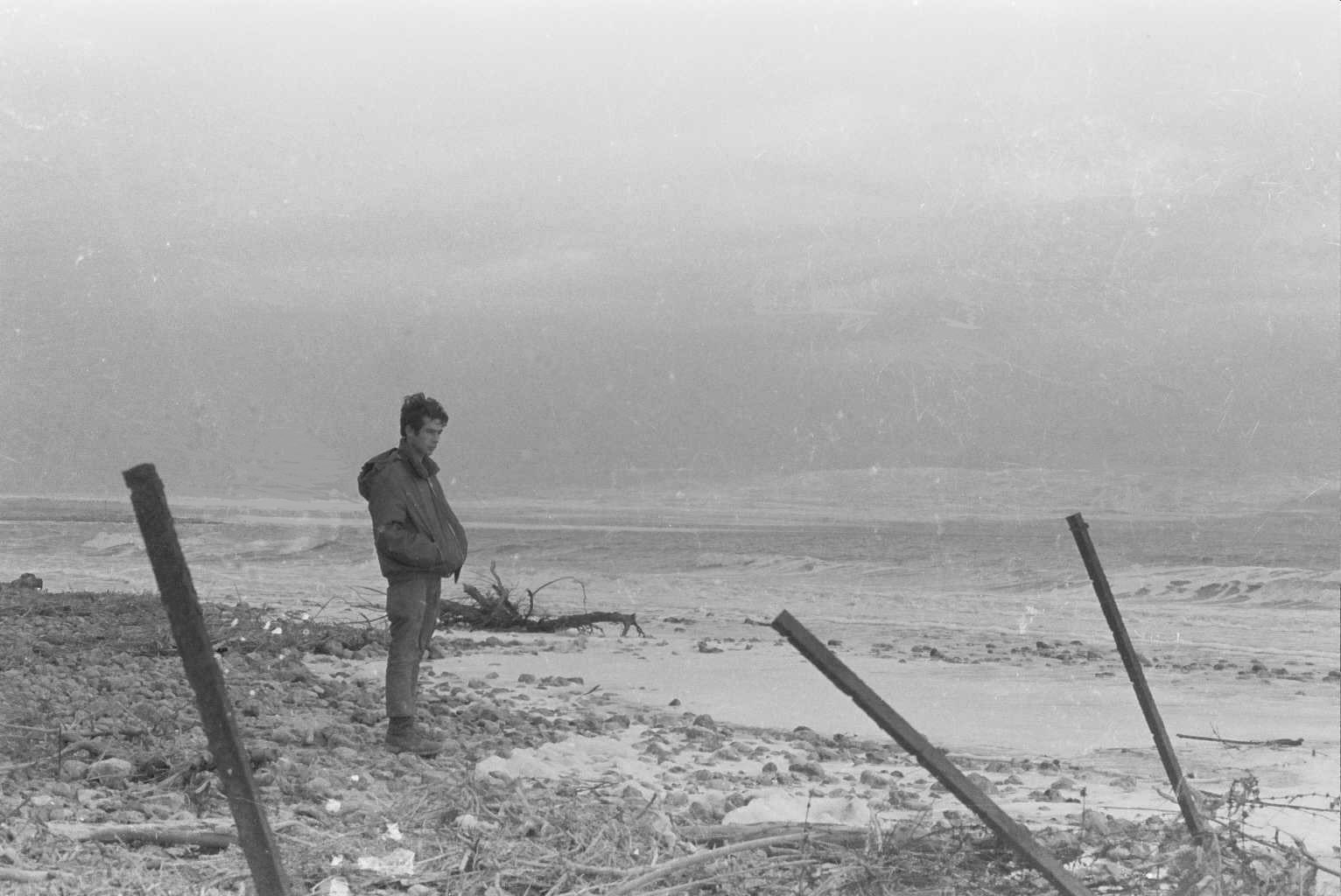


In memory of Arie Aloni
Born on Kibbutz Dan, 22nd of Cheshvan, 5713 (November 10, 1952). Fell in Egypt, 13th Tishrei, 5734 (October 8, 1973)
Arie Aloni didn’t like life in the army but he gave it his all—until he was killed at the Hakefar outpost in the Yom Kippur War. He was posthumously awarded the Medal of Distinguished Service. Ehud Banai memorialized Aloni in a story about one night on guard duty, on the shore of the Dead Sea.
Narration: Ehud Banai
The Poem of His Life
Arie Aloni was born on Kibbutz Dan and was a great grandson of Yosef Feinberg, one of the leaders of the First Aliyah and among the founders of Rishon Letzion. His father Yosef Aloni sat in an Egyptian prison during the War of Independence. Arie attended Tse’elim elementary school in Beer Sheva and then the Boyar High School in Jerusalem. Arie enjoyed poetry and even wrote many poems himself. He loved to hike around Israel, easily made new friends; in high school he was considered a leader among his classmates.
 Arie Aloni Z"l |
Arie joined the army in November 1970 as part of the Nahal program. He did not like army life and had trouble with army discipline, but he gave his all to the tasks that he viewed as important. He was stationed in the Hakefar outpost on the shore of the Suez Canal. In the fighting during the Yom Kippur War, he assisted in the rescue of the wounded and continued to fight even though he had sustained a head wound. He was killed while defending the position at the gate. At first he was listed as missing; in April 1975, the Egyptians returned his body. He was buried in the military section of the Beer Sheva cemetery. For his bravery, he was awarded the Medal for Distinguished Service.
After his death, Arie's parents received the following condolence letter, among others: “I was Arie’s teacher in math in Grade 9, 10 and 11. I have no way to console you and my goal in writing this letter is only to tell that one of his teachers remembers him with particular fondness, that he was a great person. I remember him with great admiration, he was among the brightest of my pupils.”
 |
Thoughts from Ma’ayan Zuriel and Isca Mayo who created the film:
Outside of time and place
Ehud Banai’s story about Arie Aloni, his friend during the army, describes a unique encounter that lasted only one night and which nonetheless is engraved in his memory as a significant moment. This is a universal story that is charged with innumerable meanings when we discover the context in which it took place.
When we first read the story, we wanted the viewer to share the feeling of commemoration and remembrance. From our perspective, the complex experience of memory organizes a moment, an object, a look, a feeling, fragments of pictures that come together into a full memory. We translated this principle into a visual language that focuses on building and dismantling of the picture. Another element that we focused on was the use of light, which reveals the intimate moments between the two characters.
Aloni and Banai talk about existential questions, about lofty issues. They detach themselves from the army experience that surrounds them and wander together into the world of their imaginations. When we designed the environment and composition, we sought to describe this world which stands apart from the military routine and from any sharp distinction between time and place. “It is actually encouraging to me that nothing stands still,” says Aloni in the story. This idea underlies the direction and the choice of artistic technique. There is no interruption between the scenes in the film, they "flow" freely from one to the other.
We were given the privilege and the responsibility to provide form and color for another person’s story, and in particular since this is the memory of one of the fallen. During the creation of the clip, we tried to ensure that the emotion that is conveyed by the written word is also conveyed through pictures, but we tried to avoid overly direct illustration of the text. We preferred to reinforce it by creating symbolic characters with multiple layers. We hope that the light that we chose in order to illuminate the story and the interpretation that we gave it will awaken the viewers’ emotions and will connect them to Banai’s feeling as they are represented in the story.